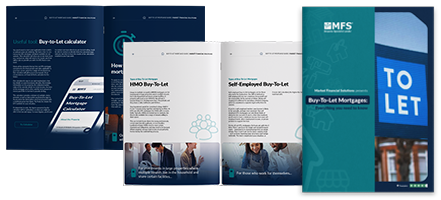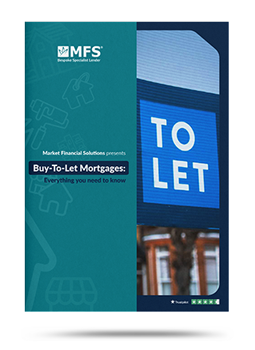Disclaimer
MFS are a bridging loan and buy-to-let mortgage provider, not financial advisors. Therefore, Investors are encouraged to seek professional advice.
The information in this content is correct at time of writing.

Much of the commentary focused on the property market at the moment is centred on how we need to build more homes. Regardless of whether you’re looking at the rental or buyer’s market, we’re not building enough new homes to keep up with demand. While the target was recently dropped, the government aimed to build 300,000 homes per year to keep the balance between supply and demand steady. But we haven’t come close to hitting this number since at least the early 1970s, according to the Home Builders Federation. Nevertheless, a lot of time, effort, and resources has been put into creating new builds across the UK. The question remains though, is buying a new build a good investment?
Looking ahead, new builds will likely play a crucial role in the housing market. Especially as both labour and the conservatives have discussed the possibility of opening up green belt land and/or brownfield sites for development.
To help you understand how, or whether new builds should be a part of your investment strategy, we’ve put this blog together. We’ll explore how new build prices are faring in the current market, the pros and cons involved, and where opportunity may lie in the UK. However, before deciding whether any type of venture including buying a new build is a good investment for you, it would be wise to talk to a professional advisor about your investment goals.
Source: The Telegraph, BBC, inews
New build prices
New builds can come to the market at a relatively high price, which is especially true for flats. This can make it difficult to generate a profit when the time comes to sell the property on. In fact, 1 in 8 new-build homes are being resold at a loss, according to analysis conducted by Hamptons estate agents in early 2023.
But that means 7 in 8 aren’t being resold at a loss. Generally, since at least 2008, new house prices have risen in line with second-hand flats and houses. Meanwhile, new build flats dramatically outpaced all other residential options, having doubled in price since 2009.
More recently, new build price growth proved more resilient than their older counterparts. In mid-2023, Halifax’s House Price Index showed existing houses continued to fall in value in May, declining by 1.9% over the year. Whereas prices for new build properties rose by 2.8%.
Generally, the question of “Is buying a new build a good investment?” will be dependent on the size of your budget. If you’re investing in a new build, you’ll likely need a fair bit of capital.
In late 2023, the typical UK new build property sold for £413,032. This was compared to £282,440 for existing homes.
Source: The Telegraph, Halifax, This is Money
The pros – energy efficiency, demand, government support
While the benefits or downsides of any investment will be dependent on your individual circumstances, there are several potential upsides to buying a new build as an investment.
New builds can come fully furnished, which can aid with a BTL strategy. There may also be low maintenance costs in place as items such as boilers are new, along with a smoother buying process, with the property being empty. There are generally fewer chains involved with a new build purchase, minimising the chances of chain-breaks, gazumping, or gazundering.
Arguably though, one of the most important perks associated with new builds is their energy efficiency. Around 80% of new builds have an energy efficiency rating of A and B.
Buyers and renters alike are keen on all this. Nearly a third (35%) of consumers are now willing to pay a higher price for the energy efficiency benefits of new builds. Also, in London, prime new builds are attracting higher premiums from buyers and renters in the capital.
This demand may only push higher over the coming months too. There are already several government schemes available to support investment in new builds. This includes the shared ownership, deposit unlock, and first homes schemes.
Source: RW invest, Mortgage Solutions, Property Notify

The cons – high costs, poor quality, nimbyism
While buying a new build investment can command a high premium, it also means there’s higher entry costs involved. And while a new build’s green credentials may bring in some buyers, separate snags may put many others off.
Developers have been accused of rushing their projects or building new homes cheaply. This can result in shoddy houses with multiple defects.
In late 2021, analysis from BuildScan found the average new build property came to market with as many as 157 defects. Common examples included poor plastering, bad brickwork, and damaged windows.
All this adds to the negative sentiment surrounding new build developments. They often face push back from nimbys, and Michael Gove has started to block developments for being too “ugly”.
Source: This is Money, The Telegraph, This is Money
Where can opportunity be found?
Regardless of whether you consider buying a new build a good investment or not, they may become at least a factor in your future plans. Both the government, and the opposition, are under immense pressure to build more homes.
And even with all the challenges facing our economy, there are glimmers of optimism for the new build sector. In a recent report from the Royal Institution of Chartered Surveyors (RICS), it was noted that more people are buying smaller homes due to affordability. This resulted in a rising number of people moving out of older properties to buy more energy-efficient new homes.
If you’re wondering where’s best to get involved, several new-build hotspots have popped up around the UK. Last year, the Southeast of England saw the largest degree of building activity, with 31,680 new-build homes started, according to easyMoney.
This was followed by the East of England (24,660), East Midlands (21,580), Southwest (20,870) and London (20,480). At a local authority level, North Yorkshire took the top spot, with 2,310 new homes started. Greenwich, North Northamptonshire, and Central Bedfordshire also saw a lot of development in 2022.
If you’re thinking about buying a new build as an investment, specialist lending may be able to help. Our bridging finance, along with our BTL mortgages, can be used for a range of new build properties. Should you find the right option for your circumstances, we’re only a phone call away.
Source: The Telegraph, inews, Morningstar, IFA magazine
The Complete Guide to
Buy-to-Let Mortgages
Everything you need to know
- Fundamentals
- Different mortgage types
- Useful tools
- Industry stats & more




